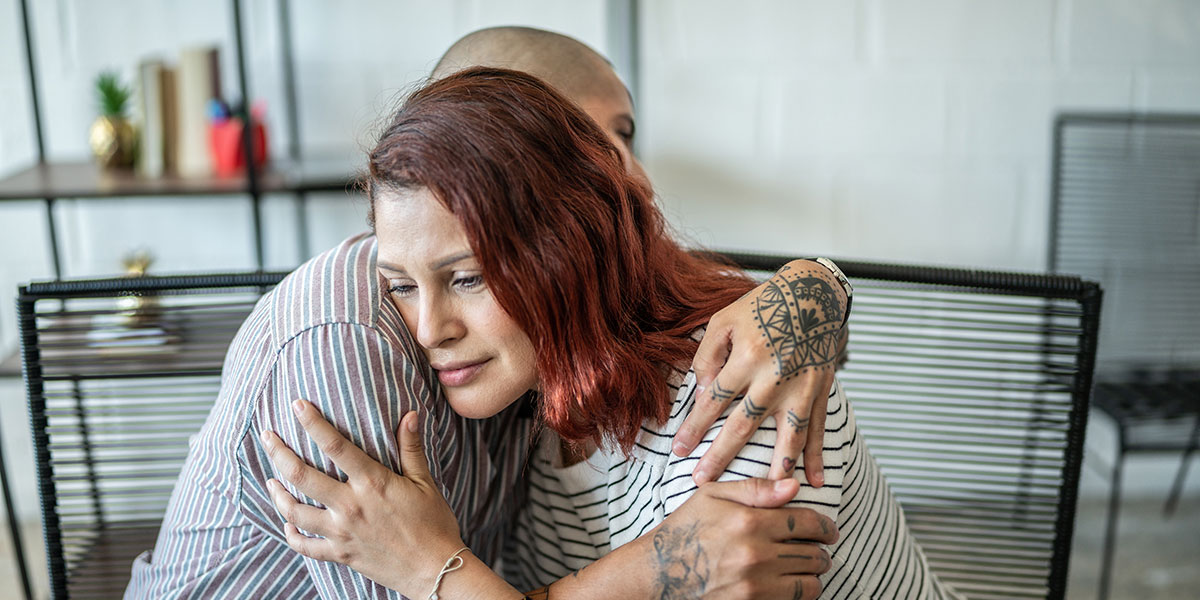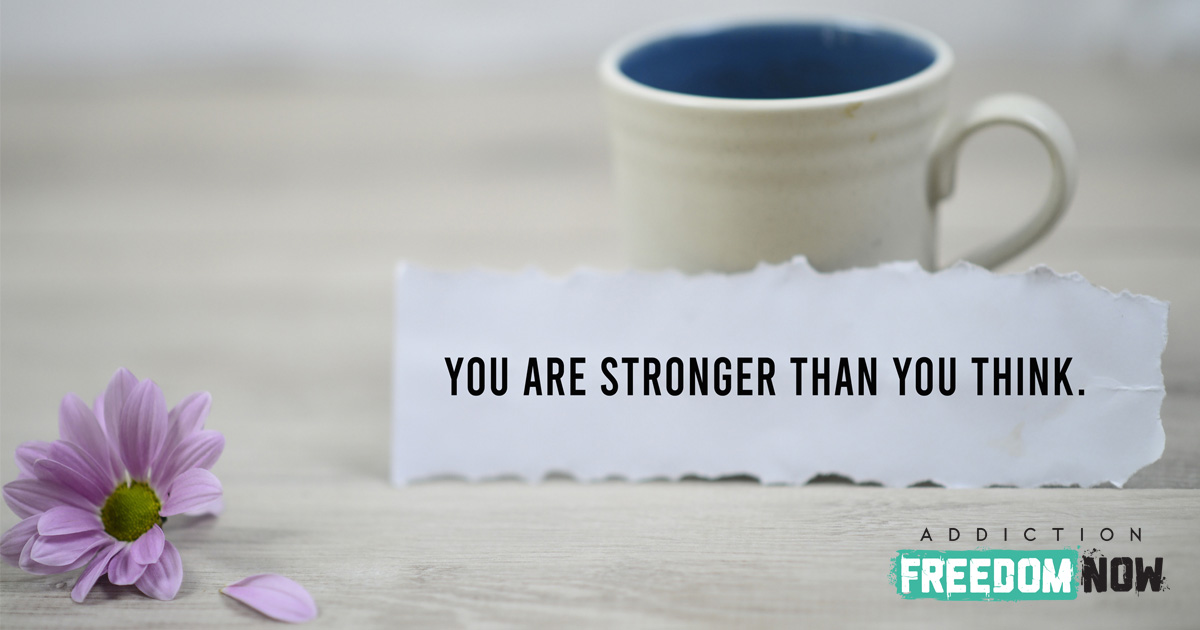Over the years, I’ve noticed that when it comes to the term “intervention,” most people think of the events they may have seen on television. Often, a person with substance use disorder is surprised by a meeting with their loved ones, who have come to express their concerns regarding their substance use. The person is encouraged to seek treatment with their loved ones support, and the episode often ends with the individual checking into a treatment center.
While this can certainly be a part of an intervention, there is far more that is involved with the intervention process. In fact, it’s important not to think of intervention as a one-time occurrence. Instead, it is a continuous effort that begins with concerned loved ones and may last months or more.
What Is The Concept of Intervention?
Over the years, I’ve noticed that when it comes to the term “intervention,” most people think of the events they may have seen on television. Often, a person with substance use disorder is surprised by a meeting with their loved ones, who have come to express their concerns regarding their substance use. The person is encouraged to seek treatment with their loved ones support, and the episode often ends with the individual checking into a treatment center.
While this can certainly be a part of an intervention, there is far more that is involved with the intervention process. In fact, it’s important not to think of intervention as a one-time occurrence. Instead, it is a continuous effort that begins with concerned loved ones and may last months or more.
What Is The Concept of Intervention?
The general concept of an intervention centers around purposeful actions taken to address and alter a behavior or condition. In the case of substance use disorder, friends or family members in conjunction with an interventionist take purposeful action with intentional efforts to achieve the goal of helping an individual with SUD to seek recovery. It is not passive, but it is active in its approach.
Interventions are aimed at helping a person understand there is a problem, presenting them with the options available to address the problem, and providing the proper support necessary for them to pursue it. Interventions are tailored to the specific individual to address their individual needs, as well as the needs of their loved ones – and, if applicable, the community around them. The context of the person’s life and unique circumstances will be taken into consideration.
What Is Considered an Intervention?
As I mentioned, interventions include far more than the meetings you often see on TV. Intervention actually encompasses a broad range of actions. Generally speaking, an intervention involves the intentional efforts to help the individual change their behavior in order to bring about a renewal in the person’s life and for those around them. Before a full-fledged group meeting becomes necessary, an interventionist may work with the individual to offer education, therapy, and other tools.
That is to say, interventions don’t only include reactive tactics. They include preventative measures as well, which are aimed at helping the individual recognize the path to recovery and help them stay on it. It could even include measures that keep the person from having access to substances. That’s because with intervention, factors that increase the risk of substance use can be addressed, such as peer pressure, childhood trauma, and economic status.
The ultimate goal of intervention is to promote recovery, improve health, and ease the lives of people with substance use disorder and their families.

Who Is Involved in an Intervention?
For most interventions, there are many people involved who all work together. First, of course, there is the person with substance use disorder who is there to receive support and assistance offered by professionals and others. Next, there are the loved ones of the one with SUD. These can be family and/or friends. They play a critical role in providing emotional support and encouragement during the intervention process.
Another important group includes trained interventionists who facilitate the steps of the intervention process, as well as the counselors, therapists, and other professionals who are trained to assist in recovery once it begins. This group has the knowledge and skill to help individuals and their loved ones navigate the intervention and recovery processes. They can provide guidance and support, and some of them even provide treatment to address substance use. These individuals can be a source of information and resources, as well as provide emotional support.
A final group of people involved in interventions who are often overlooked are the policymakers. These individuals look at interventions on a large scale, developing policies, creating programs, and creating resources to assist those affected by substance use disorder. They will also look at the larger potential causes of substance use.
So, What Is the Intervention Process?
It’s important here to mention that there is no single path through the intervention process. In fact, the intervention process is an intentional, team approach to assist someone on their personal road to recovery from substance use disorder. It begins with the interventionist and loved ones assessing what’s going on with the individual and how it’s affecting them. Then, a plan is created to fit their unique needs. The team assembled continues to check in on their progress, offering the support they need, with the goal of empowering them to recover.
Though individual considerations are a crucial part of intervention, the process may unfold like this.
Assessment

The first and probably most important step in intervention is to decide if it is the right move for the individual and their loved ones. Often, this comes alongside approaching an interventionist for help with the individual’s current situation. A professional interventionist and support team can assess whether the person needs help with substance use disorder or any other issues.
They will also consider other questions, such as:
- Is there anything else the family could try instead of an intervention?
- Would an intervention make matters worse?
- Does the family have what they need to support recovery (or can they find someone who does)?
- Can a professional handle the situation?
At all times, the focus remains on the person with substance use disorder.
Selecting an Intervention Team
When it comes to intervention, picking the right team is important. These are the supportive allies who will help be a part of the process. Typically, this team consists of family, friends, and professionals like counselors in addition to the interventionist. Each person brings their unique perspectives, expertise, and insights to the table. It is best to choose people who have a good relationship with the individual and who can clearly communicate with each other.
Individual Scripts and Statements
Each person on the team will typically prepare their own letter or statement that outlines their thoughts and concerns in a clear manner. Preparing thoughts beforehand helps loved ones to communicate clearly, effectively, and with care and empathy. While these statements will likely include observations of the individual’s behavior and impact on themselves and others, they will also include feelings of love, care, and encouragement.
Rehearsals
After each member has prepared their statements, they will typically have a rehearsal to prepare to present them to their loved ones. Each member will practice to make sure they are prepared and comfortable sharing their feelings. This also gives them time to ensure they are sharing their thoughts with the correct motives. During this time, the team will brainstorm objections that the individual may have and come up with the best solutions to address them without provoking them to become defensive.
Setting Boundaries
Each team member will also communicate the boundaries they feel they need to establish for the relationship going forward. Clear boundaries are often a form of healing for those with SUD. Boundaries are clear and non-negotiable and help the team members maintain their own sense of well-being while also offering support to the individual with SUD. Clearly communicating boundaries helps everyone stay on the same page throughout the intervention process.
Creating a Plan
Once the team has expressed their thoughts and boundaries, the next step is to create a plan of action. This plan includes steps for their loved one as well as the plan for matters that the individual may need help with while beginning their recovery process, such as who will assist with transportation if necessary or taking care of pets and children. Team members may offer their strengths to help in places where needed.
For the person with SUD, the plan may include regular meetings with the interventionist in a one-on-one capacity, treatment center selection, insurance, and any costs associated with treatment. The plan may also include a timeline for treatment. It is typical for treatment to begin as soon as the individual agrees to attend, so many times, the team will set up an appointment ahead of time.
Treatment options are often rehabilitation programs but can also include outpatient therapy and group or individual counseling. The interventionist can ensure any necessary logistics, such as transportation, are handled well before the individual agrees to accept help. One of the main goals of this step is to provide as much support to the loved one as possible so they do not have to worry about additional steps which could discourage them from accepting treatment.
Preparing for Recovery
Many people think of the encounter between the group and the individual as the final step in the process, but it is really just the beginning. Once the person with SUD accepts help and begins treatment, new challenges arise. Loved ones receive education regarding reasons why their loved one may not want treatment and how to respond to those. They are also informed about the possibility of their loved one wanting to end treatment early.

During this step, plans of action will be put in place to help assist the individual and their loved ones in the treatment process. This includes staying united as a team, remaining in touch with treatment staff, and learning how to respond in certain situations that may arise. The family is informed about how treatment looks for their loved one, as well as how they can continue to support and communicate with their loved one during this time. I often recommend that loved ones seek their own educational opportunities and participate in therapy at this time.
Preparing for Many Outcomes
As treatment progresses, the family is briefed on possible outcomes that may result from treatment. As a group, they will typically brainstorm ideas on how to approach each outcome with support for the person with SUD. They will also discuss ways to keep the team united. For instance, they will implement ways to ensure that one member of the group does not go against the plan and goes back to enabling substance use.
Continuing Care and Recovery
At some point, the family will be informed of options for continuing care. They can obtain this information from the interventionist and the counselor at the treatment center. Counselors can weigh in on what they believe is best for the individual, while the interventionist can provide insight as they are aware of the family’s circumstances, including their financial situation.
Some examples of continuing care include outpatient counseling, support groups, sober living environments, family therapy, peer mentorship, and employment assistance. Family members can help in many different ways at this stage. They provide emotional support to the individual, as well as encouragement and understanding. They can also stay involved in recovery by attending family therapy sessions and participating in support groups.
In addition, there may be more practical ways they can help, such as helping with household chores, providing financial assistance, or offering transportation to and from appointments. Finally, all involved can take part in celebrating the individual’s milestones and goals when they are met.
Family Recovery
While the main focus is on the loved one with SUD gaining their road to recovery, family recovery is also important. In addition to individual therapy, there are many family programs available for those who have a loved one with SUD. These have been known to help rebuild relationships for everyone involved, as well as decrease the chances of relapse.
What Is the Time Period of Intervention?
The time period of intervention varies depending on the circumstances and needs of each individual. In some cases, the intervention can be a one-time event that lasts only a few hours where family and friends express their love and concern for the individual. However, it does not end when the individual agrees to accept help. Even in the shortest cases, the real work of the intervention is ongoing.

For those who seek treatment after the initial meeting, this process could take weeks or months, depending on their needs. For those who take time to come around to the idea of accepting help, the process could take even longer. Altogether, the timeline of an intervention includes the pre-intervention preparation, initial and follow-up meetings, treatment, and aftercare. Even after treatment, the intervention process continues with ongoing support to aid in the individual’s continued recovery.
As you can see, intervention is a continuous process of support and assistance – much more than just a singular meeting or treatment process. It includes ongoing challenges and changes while also providing continuous love and support from family and loved ones. It is a fluid process that has no specific time period. However, it continues to evolve and grow as the individual and their family change over time and as they continue on their road to recovery.
From the time family and friends come together to share their thoughts and feelings to the continued recovery of the person with substance use disorder, intervention is a continuous journey on the path to recovery. Understanding the process is an essential first step, but only the beginning.
Want to learn more? Learn how the services we offer at A Time to Heal: Family Interventions can help individuals and their families with strategic solutions to recovery. Learn more or contact me here to connect.
Remember, there is always hope.
– Jim




